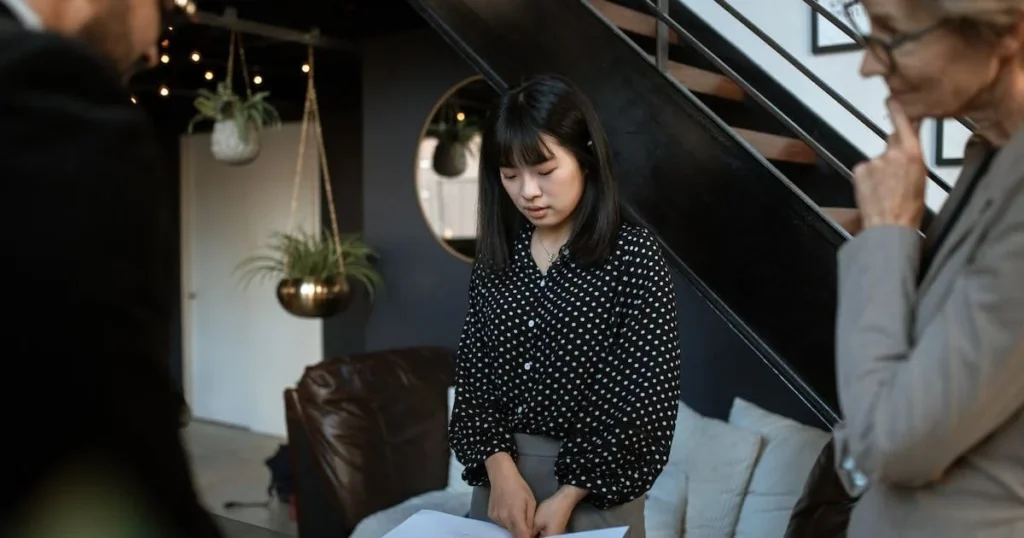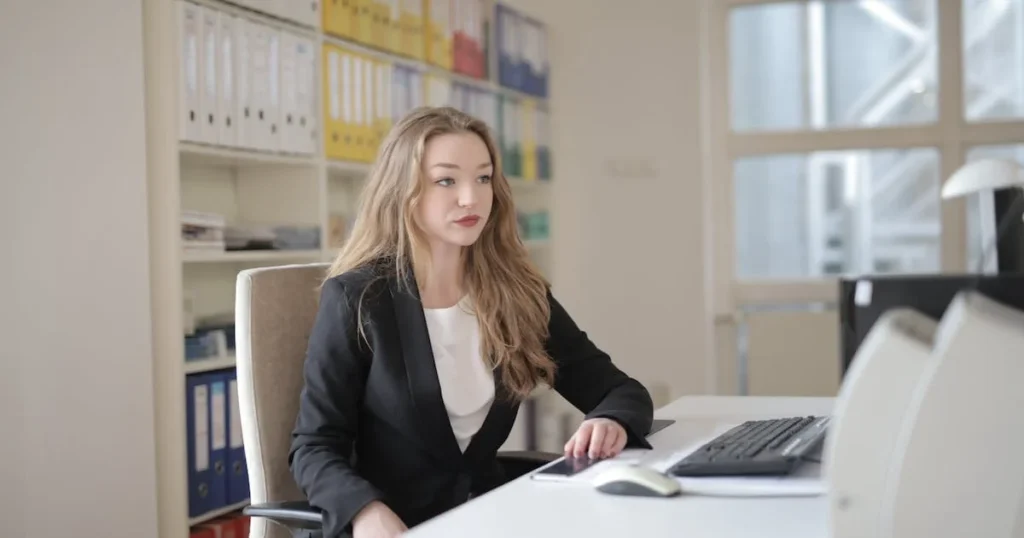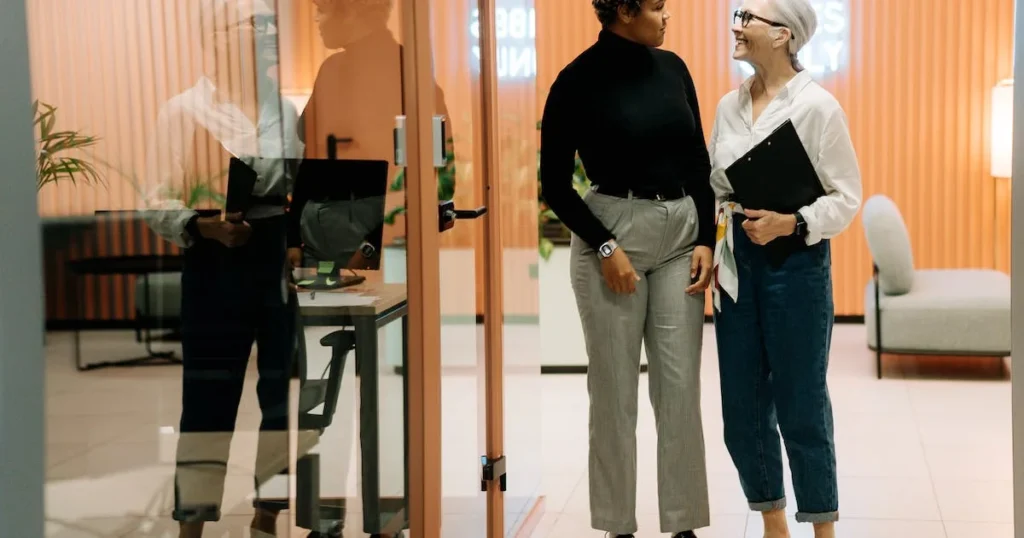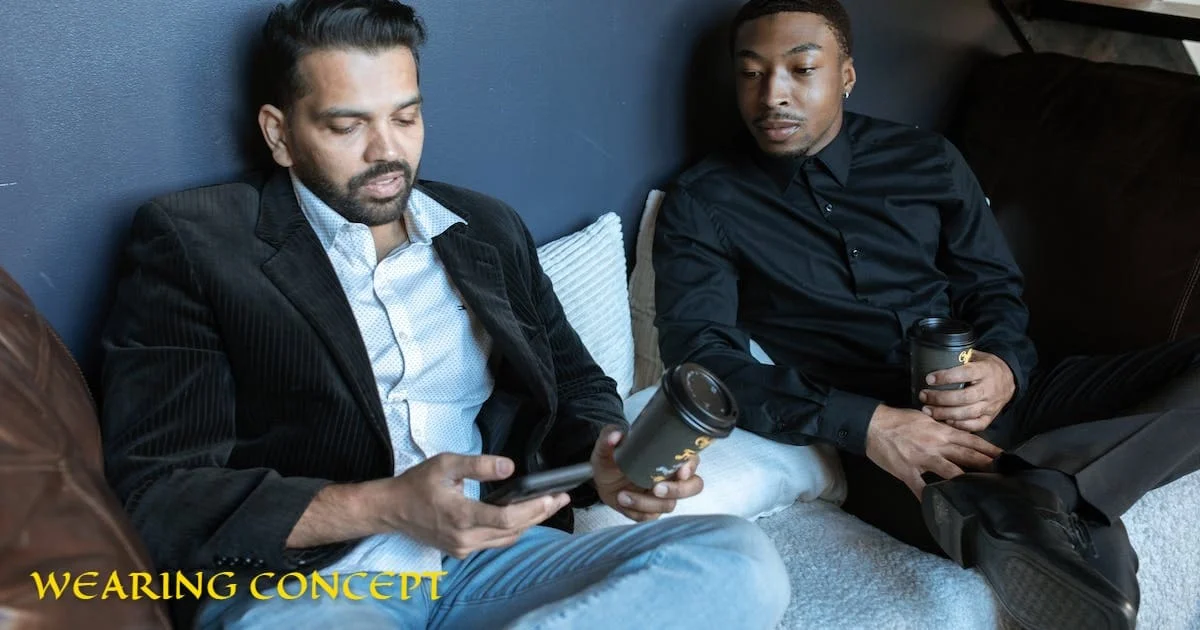Interviews can be nerve-wracking experiences, but dressing appropriately can help boost your confidence. Choosing an interview outfit demonstrates that you understand professional norms and are serious about the position. This article provides tips to determine what is appropriate to wear during different types of job interviews.
How to Select an Interview Outfit When selecting an outfit, research the company culture and dress code norms. The interview attire expectations differ between formal and casual work environments. It’s also important to dress appropriately for the interview format, such as video call versus in-person.
The Key Elements of Interview Attire Your interview clothes should check the following boxes:
- Professionally appropriate – Avoid anything too casual, revealing, or sloppy.
- Well-fitting – Not too tight or too loose. Ensure clothes are properly hemmed.
- Clean and pressed – Iron out any wrinkles or imperfections. Shine shoes.
- Minimal patterns and jewelry – Don’t distract with loud colors, accessories, etc.
- Comfortable – Select breathable fabrics that allow you to focus.
Table 1 outlines examples of Acceptable Versus Unacceptable interview attire for both men and women.
Table 1: Acceptable and Unacceptable Interview Outfits
| Gender | Acceptable | Unacceptable |
|---|---|---|
| Men |
|
|
| Women |
|
|
What to Wear for Different Interview Types
What you decide to wear can vary depending on the specifics of the job, company, and interview format.
In-Person Interview Attire

For an in-person interview, formal business attire is expected:
Men
- A two-piece suit in a dark color like black, blue, or gray
- Long-sleeved collared dress shirt, ideally white or light blue
- Leather belt and dress shoes
- Tie that coordinates with the suit
- Minimal jewelry and cologne
Women
- Business suit with pants or knee-length skirt in a dark color
- Collared blouse or sweater
- Closed-toe pumps with 2-3 inch heels
- Neutral pantyhose
- Simple jewelry and makeup
- Professional hairstyle
Video/Virtual Interview Attire
Remote video interviews require slightly less formal attire, but you still want to make a professional impression:
Men and Women
- Solid button-down shirt or blouse instead of full suit
- Blazer or cardigan on top
- Business casual pants or skirt instead of full suit
- Dress shoes that can’t be seen on camera
- Simple jewelry and accessories
Since the camera frames mostly your shoulders and face, those details matter more than your whole outfit. Iron or steam wrinkles out of visible clothing.
Panel Interview Attire
Panel interviews with multiple people interviewing you require more formal dress:
Men
- Two or three piece matched professional suit
- Button-down collared dress shirt
- Coordinating silk tie
- Dark leather belt and dress shoes
Women
- Professional suit with blazer
- Collared blouse
- Closed-toe heels
- Minimal jewelry
With multiple people observing you, err on the more formal side. Show you understand the importance through your polish and preparation.
Job Fair Attire
When meeting recruiters in less formal job fair settings:
Men and Women
- Slacks, dress pants, skirt, or dress
- Button-down or collared polo shirt
- Sports jacket or blazer
- Loafers or dress heels
- Portfolio or bag for resumes
A put together business casual outfit makes the right impression at busy job fairs with quick interactions.
Internship/Entry Level Interview Attire

Younger applicants have slightly more flexibility for interviews:
Men
- Dress pants with button-down shirt
- Optional tie or bow tie
- Sweater, vest, or blazer
- Leather shoes
Women
- Professional dress
- Blazer
- Flats or low heels
- Minimal jewelry
Professional personal presentation still matters for those newer to the workforce.
What Colors to Wear Stick to basic solid colors that lend confidence. For both genders, excellent color choices include:
- Navy blue
- Gray
- Black
- Dark brown
- White
Men can also consider subtle pinstripes or very small plaids. Women have a few additional options like maroon, emerald, or dark purple.
Ultimately though, keep top colors muted. You want the focus to remain on your skills and not your clothing.
What to Avoid Wearing Some clothing pieces should always be avoided for interviews:
- Jeans or casual pants
- Revealing attire
- Visible tattoos or bold piercings
- Short skirts or dresses
- Bold patterns, accessorizing, or heavy makeup
- Too casual shoes like sneakers or sandals
Any distraction from your professionalism and qualifications should be eliminated. Keep interview outfits simple, polished, and focused.
Suit Options for Men For men, wearing a professional suit to interviews remains a standard and safe choice in most industries.
The suit color, material, and styling communicate nonverbal messages. Pay attention to these factors when selecting yours.
Suit Color
Stick with basic darker hues that easily match with various dress shirt colors:
- Solid Navy blue
- Charcoal gray
- Classic black
Black suits can look slightly more somber or “gangsterish” in some situations though, so consider the industry culture. Some creative fields embrace more expressive options as well.
Pinstripe suits add a modern traditionalist visual element. Subtle pinstripes on a navy or gray suit work for many interviews. Be cautious with bolder pinstripes though in conservative fields.
Suit Material and Texture
The suiting material impacts both appearance and comfort:
The warmest yet most wrinkle prone option. Travels well overall.
Mixing in cotton, cashmere, silk, etc. helps minimize wrinkling and adds durability. Can sacrifice structure though.
Requires less ironing and offers affordability. Can look cheap based on weave and sheen though.
Consider climate and anticipated travel for the job when selecting material. Favor wool blends for versatility in most interview situations.
Suit Styles
Men’s suit silhouettes change somewhat based on shifting fashion trends, but several styles remain as go-to choices:
A versatile and timeless style, more modern than three button suits.
Traditionally conservative but less common today.
Less formal than double-breasted overall.
Remain minimally popular, though seen as more bold and stylish.Sleek and slimming but can bunch at bottom with movement.
For interviews, opt for two-button single-breasted suits with vents. Select notch lapels over the more avant garde peak lapels as well.
Suit Jacket Fit and Length Avoid suit jackets that are overly tight or loose, as improper fit looks unprofessional. With arms at your sides:
Should end right at wrist bone to expose just a half inch of shirt cuff.
Suit Jacket Fit and Length Avoid suit jackets that are overly tight or loose, as improper fit looks unprofessional. With arms at your sides:
Should end right at wrist bone to expose just a half inch of shirt cuff.
Should have padding that lines up with the end of your shoulders without gaping or constricting movement.
Should have slight ease without pulling at mid-section as you button. Suppressing your stomach to fasten indicates too small.
Should fall just to tops of pockets at bottom. Avoid overly cropped or long jackets.
Properly tailored suits flatter your proportions and range of motion. Invest in alterations for the interview if needed.
Dress Shirt and Tie Pairings Complement your interview suit with coordinated dress shirt and tie combinations.
Dress Shirt Colors
White, light blue, and subtle stripes remain classic dress shirt options. French blue offers a dressier alternative to standard sky blue.
Crisp solid whites lend confidence and let vibrant ties pop. Light blues work better for blending with more suit colors.
Gray, pink, lavender, and checkered shirts expand choices as well. Just avoid loud prints or novelties.
Tie Considerations
Aim for rich tie colors and fabrics like silk that appear high quality even on camera:
like dots, neat foulards, or subtle diagonal stripes work.
Such as matte silk or fine wool suit the professional context.
Match wider ties with wider lapels and skinny ties with slimmer suits. The tip of the tie should just touch the belt buckle when standing.
Pulling Your Interview Outfit Together
Double check all elements of your interview look including:
Should be freshly trimmed and styled prior.
Must be neatly trimmed and clean of any polish or dirt.
Casual Attire
Steer clear of t-shirts, jeans, shorts, sneakers, and anything meant for working out or lounging around. Overly casual clothes make you seem unserious.
Distracting Jewelry or Makeup

Avoid large, dangling jewelry pieces or heavy makeup that draws eyes away from your skills and credentials. Eccentric stylings also may not mesh with more buttoned up work cultures.
Provocative Outfits
Revealing and overtly sexy clothes typically cross the line for appropriate interview attire unless applying for brands with risqué cultures. Even then, err on the conservative side when first meeting a company.
Warning Sign Tattoos or Piercings
Facial or hand tattoos remain taboo for many white collar positions. Cover controversial body ink with clothing and use clear spacers in piercings if able to avoid automatic judgements.
Religious Garb
Some workplaces prohibit wearing overt religious symbols and clothing to prevent bias. Research policies around hijabs, yarmulkes, turbans, or clerical collars that may require accommodations.
Play it safe by projecting professionalism first when meeting an unknown organization. Display your uniqueness only after hired if appropriate.
Special Considerations for Women’s Interview Attire Women unfortunately must think about more factors around perceptions and biases related to job interviews in certain fields. Manage additional considerations like:
Makeup Expectations
Cosmetics that highlight your professionalism work well but avoid dramatic, party styles. Neutral eyes and lips with minimal base finishes prove safest.
Hairstyles
Keep hair cleanly styled and out of your face whether up or down. Styles with braiding or unnatural colors could impact first impressions in more buttoned up roles.
Skirt and Heel Heights
Aim for skirts hitting just above or below the knee. Paired heels between two to three inches allow you to walk comfortably across rooms. Avoid stiletto styles.
Cleavage and Sheerness
Select blouses not cut too low or sheer when worn. Camisoles and blazer layers help maintain modesty.
Think through visual impacts on potential biases related to attractiveness, leadership qualities, and competence that research shows women still confront more often.
How to Shop for Interview Clothes on a Budget Professional clothing carries higher price tags. However, you can build versatile interview outfits without overspending:
Thrift and Consignment Shops
Search higher end secondhand stores in affluent areas for quality cast-offs. Dry clean finds to freshen up.
Discount Retailers
Stores like TJ Maxx, Marshalls, and Ross can yield designer brands for less. Shop off-season too.
Rental Services
Rent sample or gently used workwear for a week or month rather than buying new. Some dry cleaners even offer suit rentals.
Sales Shopping
Department stores and men’s clothing shops offer significant sales during slower seasons. Buy classic pieces you can reuse.
Retailer Clearance Sections

Check both in-store and online for discounted past season fashions.
Minimal Accessorizing
Forego more expensive briefcases, watches, and excessive jewelry when starting out.
With smart sourcing, you can dress professionally without draining your wallet.
Conclusion Deciding what to wear for a job interview proves almost as crucial as your resume preparation. Appearance remains central to critical first impressions that color assessments of your competence and organizational fit.
Seek to balance both dressing to show respect for the potential employer while feeling comfortable and confident as yourself. The most successful interview attire walks that fine line to support perceptions of you as both professional and authentic.
Aim for polish, modesty, and versatility with the outfits you select. Leave loud trends and risky style choices for once established in the role. Your interview presents a key moment to show maturity rather than overly creative self-expression.
With attention to industry norms, company culture, and dressing intentionally for the interaction format, you can determine appropriate interview apparel. Follow the tips here to discover combinations that communicate seriousness while allowing your skills and passion to stand out.
The right interview clothes demonstrate self-awareness and understanding of context often as valued by organizations as your credentials alone. So use your attire as another strategic tool to shift interviews your way.
Conclusion
Deciding what to wear for a job interview proves almost as crucial as your resume preparation. Appearance remains central to critical first impressions that color assessments of your competence and organizational fit.
Seek to balance both dressing to show respect for the potential employer while feeling comfortable and confident as yourself. The most successful interview attire walks that fine line to support perceptions of you as both professional and authentic.
Aim for polish, modesty, and versatility with the outfits you select. Leave loud trends and risky style choices for once established in the role. Your interview presents a key moment to show maturity rather than overly creative self-expression.
With attention to industry norms, company culture, and dressing intentionally for the interaction format, you can determine appropriate interview apparel. Follow the tips here to discover combinations that communicate seriousness while allowing your skills and passion to stand out.
The right interview clothes demonstrate self-awareness and understanding of context often as valued by organizations as your credentials alone. So use your attire as another strategic tool to shift interviews your way.
Frequently Asked Questions
Here are some frequently asked questions given below:
Can you wear black to an interview?
Black suit is appropriate for both men and women in interviews across most industries. Solid black projects authority and confidence for important meetings. Just avoid styles with loud patterns or textures that casualize the look.
Should I wear perfume to a job interview?
Use perfumes and colognes minimally or not at all for job interviews. Strong scents or too much could irritate those allergic and risks associations with nightlife versus professional contexts. Focus instead on clean, well-pressed interview clothes.
Is it ok to show tattoos at an interview?
Aim to cover visible tattoos when possible to avoid automatic judgements related to culture fit. Once hired into roles allowing self-expression you can display edgier style. But for the interview play it safe so your experience shines through more than appearance factors alone.
Can you wear brown shoes with a black suit?
Yes, dark brown leather shoes work well with darker black suits for interviews. Brown shoes skew less formal than basic black oxfords but remain classic and versatile. Just ensure the brown does not clash with the suiting color. Shoe style matters more overall than strict color matching.
What color socks do you wear with a navy suit and brown shoes?
Opt for dark socks that complement both brown shoes and a navy suit. Dark shades of brown, navy, black, or gray work well as sock colors for this combination. Textured patterns on socks can add subtle interest but avoid lighter tones that contrast too strongly against the darker suit and shoes.
